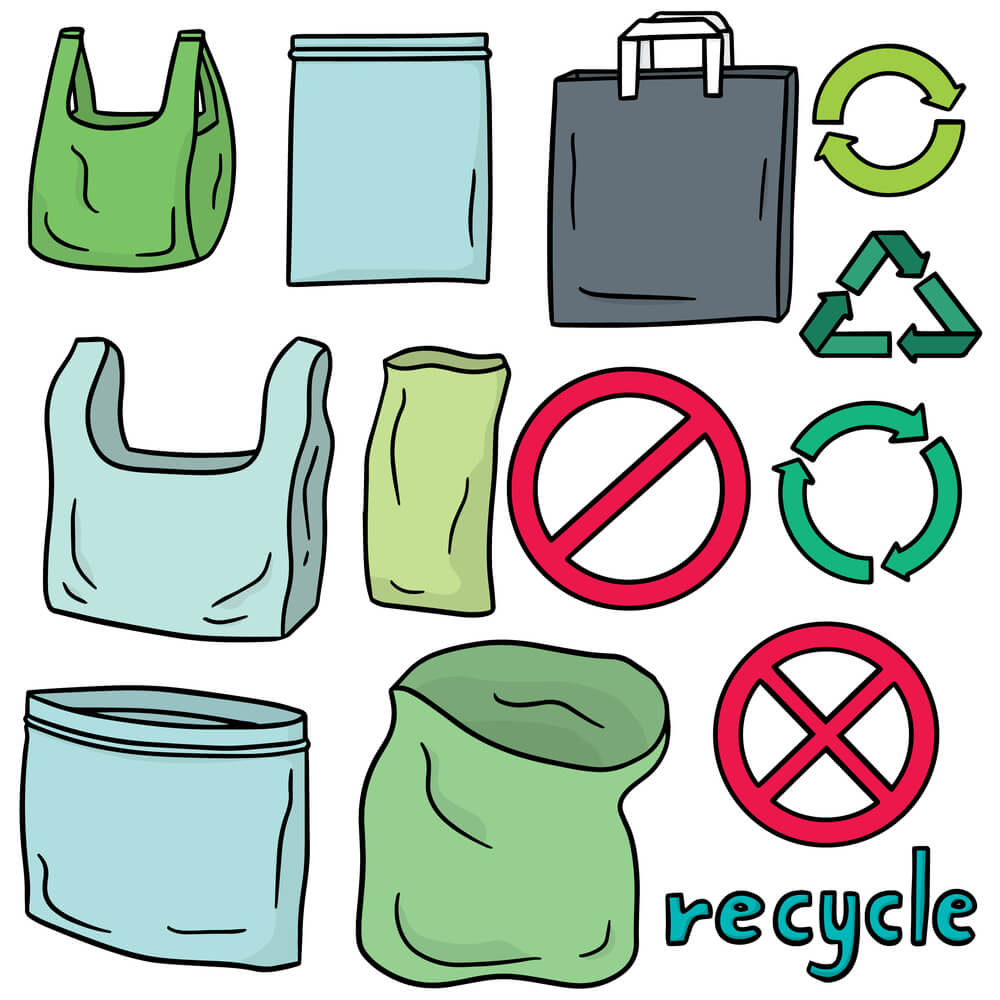In this era of change, it’s essential that we all take the time and effort to educate ourselves on some important lifestyle-related topics.
Particularly in relation to the products and items we bring into our homes and how those things affect our bodies and our environment.
That means taking into consideration the resource usage and environmental impact of both production and waste management after use.
Some biodegradable items are relatively new to consumers, and unbiased information on how these items compare to the alternatives can be challenging to find.
Biodegradable plastics, for instance, are a significant point of confusion in many households out there still, so don’t worry if you’re just now researching it.
While biodegradable plastic production aims to be more eco-friendly, these products are not recyclable.
Specially dedicated facilities can appropriately process biodegradable plastics through a fast-track biodegradation process, where heat, light, and other environmental conditions are utilized to expedite breakdown.
What Is Biodegradable Plastic?
Biodegradable plastic is a traditional plastic alternative that is supposed to be more eco-friendly due to its accelerated breakdown.
Unfortunately, the definition of the word biodegradable does not include any indication of a timeframe.
Biodegradable plastics contain different elements than traditional plastics, including cornstarch or vegetable oil.
How Many Biodegradable Plastics Are There?
There are two types of biodegradable plastic currently available to the public.
What Percent Of The Plastics Industry Is Biodegradable?
The plastic industry really picked up production post-WWII, particularly in the single-use, throw away item market.
And now, the plastics market is booming, even as people are becoming more educated on the dangers and detriments that these plastic products pose to both our immediate health and our environment.
Biodegradable plastics, however, are still a relatively new material.
In 2017, biodegradable plastic production accounted for just 0.5% of plastic packaging production.
That’s only a drop in the bucket of overall plastics production.
Yet, it is still creating an additional strain on our atmosphere’s ability to cool our planet.
Are Biodegradable Plastics Recyclable?
You should not place biodegradable plastics or any other biodegradable products into your recycle bin.
Recycling contaminants include-
- Bodily fluids or waste
- Food or food byproducts such as oil
- Medical waste such as bandaging
- Plant Matter
- Any non-recyclable items that will not break down at the same rate as other recyclables within that recyclable category
Contamination is a huge issue in recycling facilities.
It is becoming an increasingly common problem as more products geared towards the “green” crowd hit the shelves of our favorite and most trusted retailers.
Many of these products carry incredibly vague labels which imply that the materials can be either recycled, repurposed, or reused in one form or another.
The lack of detailed information on how to properly dispose of these items is a mounting problem for recycling and waste management facilities.
How Do You Dispose Of Biodegradable Plastics?
Both commercial and industrial facilities have been put in place all around the globe to properly process bioplastic materials and products.
The trouble, however, is that this system is still in its’ early stages of implementation, and there are very few of these facilities up and running at this time.
If you are unsure what recycling and waste management services are available to you locally, it never hurts to call your local waste management or recycling management center to ask.
In your best-case scenario, there is a facility near you that is able to properly process your biodegradable plastic waste.
In the worst-case scenario, you’ll find that no one in your area yet specializes in this very specific recyclables niche.
There Are Some Exceptions
Some bioplastics made from raw, natural resources are actually compostable.
These products, unlike many other biodegradable products, are typically labeled very specifically and are difficult to miss.
Compostable bioplastics can go in your average compost pile, where they will break down over time with the assistance of naturally occurring microbes.
Is Biodegradable Plastic Eco Friendly?
Some experts consider biodegradable plastic to be more friendly than others.
The disagreement hinges mainly on the fact that it is so difficult to accurately gauge the environmental impacts of items against one another.
For instance, one series of studies will focus on the timeframe it will take for our oceans to be irreparably damaged by non-degradable plastic waste.
Meanwhile, another series of studies will focus on our accelerated timeline of global warming as a result specifically of carbon dioxide and methane gases released from inappropriate disposal methods for biodegradable plastics.
The first scenario presents evidence that as plastics break down into smaller pieces, they eventually become microplastics that make their way into the food chain of all creatures over time.
The second set of studies presents equally compelling evidence that global warming will affect food growth, water scarcity, temperatures, and animal behavior patterns in a manner that will grossly negatively impact us all as well.
Unfortunately, these nasty greenhouse gases are released in large quantities even when biodegradable plastics are correctly disposed of at a specialty facility.
Our quest to find a genuinely eco-friendly plastic alternative continues; however, many experts in their fields are currently focusing on this crucial environmental goal.


